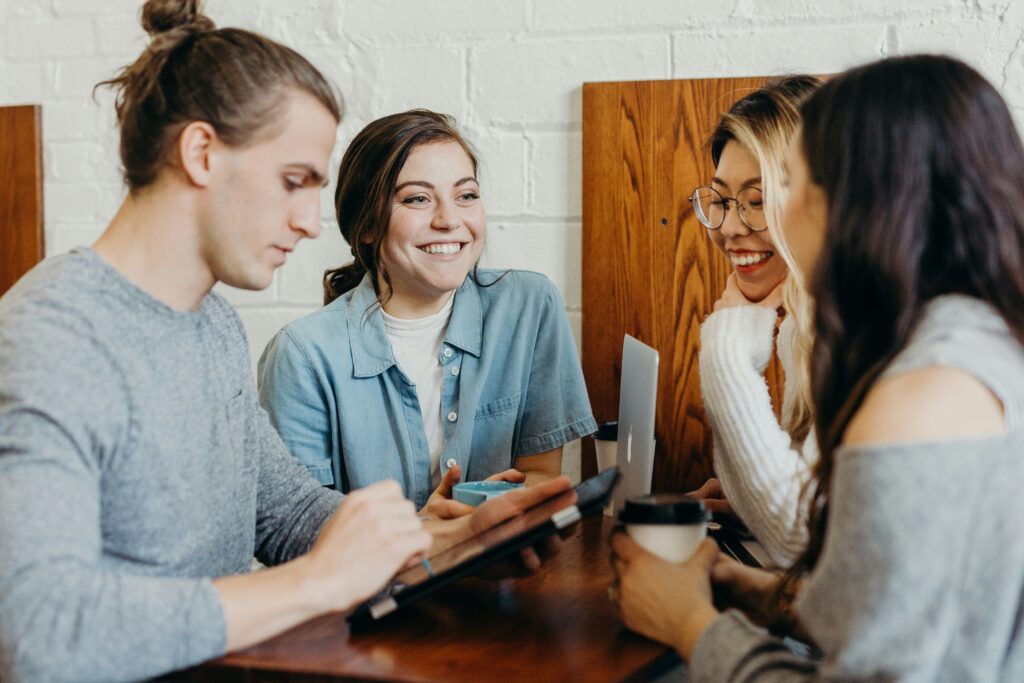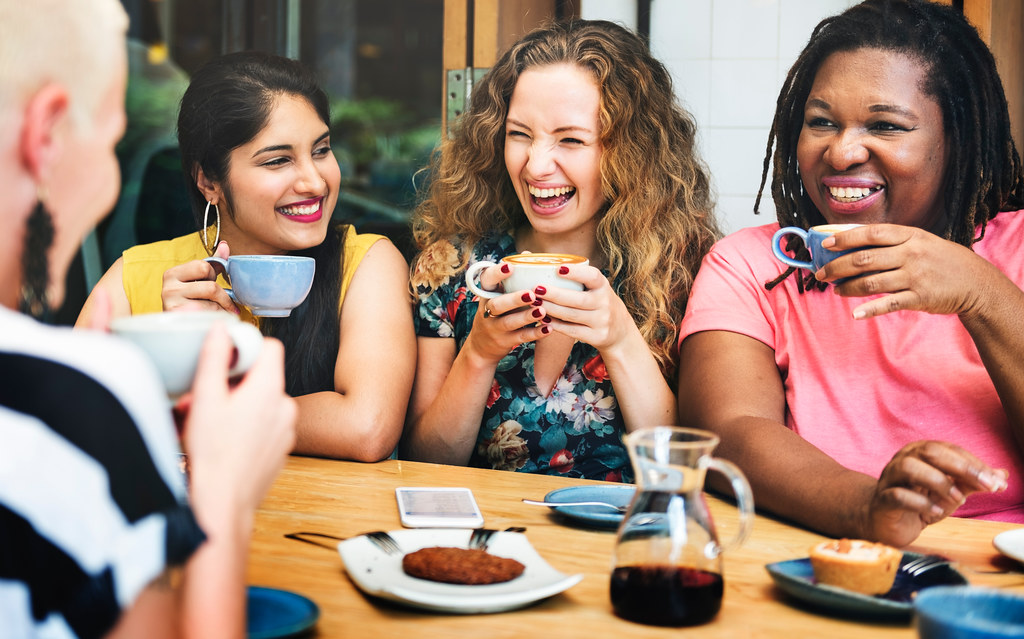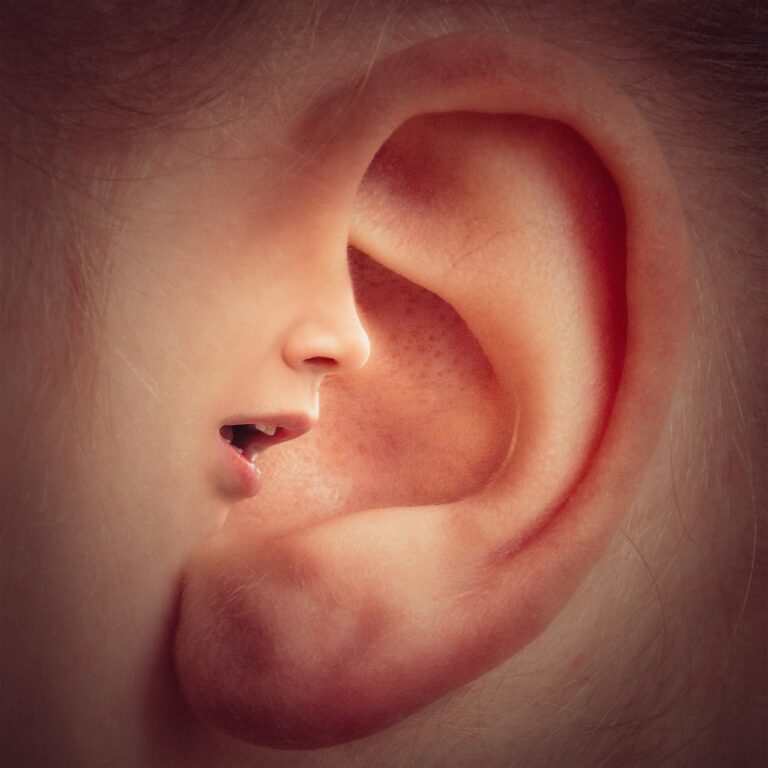
THE 3 PILLARS OF EFFECTIVE COMMUNICATI
I COMMUNICATION COMPETENCE:
Communication-based knowledge acquired either naturally (by observing and evaluating the others) or through instruction.
Learning and appreciating the balance between listening and speaking:
1. Speak clearly.
2. Communicate ethically.
3. Know when it is appropriate to speak.
4. Understand the message of your interlocutor(s).
5. Choose the best way to communicate based on context.
6. Demonstrate credibility.
7. Identify and resolve misunderstandings.
8. Manage conflict.
9. Be open-minded about another’s point of view.
10. Listen attentively
II COMMUNICATION SKILLS
- Ability to produce appropriate communication behaviors physically
Expressing communication competence in real-life
Emphasizing practice
1. Eye contact: not too strong, not too little (or absent)
2. Facial expression: Relaxed features, natural expressions (not sullen – not too smiley)
3. Hand gestures: no clenched hands, finger tapping, nail biting, fist making, etc… Some people speak with their hands, which is perfectly fine since it is natural, only it is best to avoid wide gestures and flailing hands as they tend to be distracting.
4. Touch: In general, it is Ok to touch someone on their shoulders or their arms. Touch is important in communication because it creates intimacy, but know when it is appropriate to do so (some people simply don’t like to be touched).
5. Head movement/posture: Avoid leaning your head over and supporting it with your hands (signals boredom) and thumb supporting the chin while index touches the temple or eye (signals negative evaluation). Mirror your interlocutor’s emotions with your head movement, for ex nod to positive emotions and shake to negative ones.
6. Posture: Relaxed and natural, not tense or stiff. Keep a straight posture, leaning slightly forward (shows you care). Shoulders relaxed, arms uncrossed, no rocking from head to toes, no swaying left and right.
Note: legs crossed or uncrossed: there is no agreement on that. Personally, I feel comfortable when I cross my legs, because it feels natural to me, so I would say do what makes you comfortable.
III MOTIVATION/POSITIVE AFFECT
Communication will not go well, if you are not into it.
Being in a good mood helps and looking forward to it gives you motivation.
1. Good rest
2. Good food
3. Boost your mood (see above)
4. Keep positive thoughts
Sources:
McCroskey, J. C. (1984). The communication apprehension perspective. In J. A. Daly, & J. C. McCroskey (Eds.), Avoiding communication: Shyness, reticence, and communication, (pp. 13-38). Beverly Hills, CA: SAGE Publications
https://open.lib.umn.edu/communication/chapter/1-4-communication-competence/
https://open.lib.umn.edu/communication/chapter/4-3-nonverbal-communication-competence/
FOUR MAIN COMMUNICATION STYLES
Each communication style reveals the level of assertiveness and expressiveness of the individual.
Level of assertiveness (i.e., communicating the message)+ level of expressiveness (i.e., feelings) = a particular communication style.
INTERPRETING EACH DIMENSION
High assertive: tell others what to do
High expressive: show emotions
Low assertive: ask others what to do
Low expressive: don’t show emotion
IV – CONSIDERATE COMMUNICATION STYLE
High expressiveness + low assertiveness
Natural trainers, counselors, and they enjoy helping others
Concerned about the others’ feelings, want to be liked and connect on a personal level
May be reluctant to go against the group
Tips for communicating with someone with a considerate communication style
Reassure them that your opinions are not personal
Express a sincere interest in their feelings and thoughts
Encourage them to ask questions and share their opinions
Resolve conflicts quickly
Sources:
Training, M. T. D. (2012). Effective communication skills. Bookboon.
I- DIRECT COMMUNICATION STYLE:
Low expressiveness + high assertiveness
Go-getters, expedient
Go straight to the main point and dislike small chats
Tend to not listen to others, may appear overbearing and impatient
Tips for communicating with someone with a direct communication style:
Use short and direct sentence
Don’t speak in the abstract
Go to the point quickly and limit chatting
Speak plainly, don’t sugar coat things
Be specific about your request.
II – SPIRITED COMMUNICATION STYLE
High expressiveness + high assertiveness
Dreamers, inventors, innovators
Interested in the big picture, not good with details
Tend to be dramatic, love brainstorming and find it hard to stick to one subject
Tips for communicating with someone with a spirited communication style
Understand that they may exaggerate
Praise them in front of other people
Learn to gently redirect the conversation back to the topic
Use check lists or other written reminders to help communicate what needs to be done
III – SYSTEMATIC COMMUNICATION STYLE
Low expressiveness + low assertiveness
Love data, charts, graphs.
Facts over opinions and possibilities
Avoid emotional or confrontational situations
Tips for communicating with someone with a systematic communication style
Focus on facts rather than opinions
Speak with precision and accuracy
Be logical, organized , on time
Avoid personal topics unless they start

THE ART OF CONVERSATION
STARTING A CONVERSATION
It is helpful to begin by free associating based on something you already know about the person or, if it is a stranger, find something around you to comment on, like the weather, or how late the bus is, etc…
Turn that into an open-ended question, rather than a question that can be answered in one word, eg.: “How’s your dog doing?” “How was that big trip you were planning?” “What do you have in store this weekend?”
When things get started, make sure you focus mindfully and with curiosity, and share what pops into mind in reaction to what they say.
There is no specific rule for when to introduce yourself, it will come about naturally through the conversation, so don’t worry about that.
LAST BUT NOT LEAST, LISTEN!
JOINING A CONVERSATION
First of all, remind yourself that you are being friendly by joining their conversation. You are not “breaking in” or interrupting.
When you join the circle, listen mindfully and with curiosity to what they are saying, and share your free-associated reactions as soon as possible.
You don’t need to introduce yourself unless you are asked., just stay focus on the conversation.
Show interest and be curious
Ensure there is a balance of give and take.
Be relaxed, be yourself
LAST BUT NOT LEAST, LISTEN!
ENDING A CONVERSATION
There are no specific way of ending a conversation, it can be as simple as thanking the person(s), saying it was good to talk with them, and then moving on.
You don’t necessary have to give a reason or make up an excuse to leave the conversation.- unless there really is one.
if you find it really hard to leave, just say “I have to go”, or “i am running late, I’ve got to go”.
You can also end a conversation by asking for the person’s contact info or social media (people like to share their Instagram account) to stay in touch.
AFTER A CONVERSATION
First, congratulate yourself for having been friendly, and having had the courage to take some risks, regardless of how well the conversation went.
Ruminating and beating yourself up for imperfections afterwards only reinforces your social anxiety and lowers your self-confidence.
After highlighting the positive things you accomplished during the conversation, go over the negative ones with the goals of improving yourself, not berating yourself.
Be compassionate and gentle with yourself.
Remember that most people do perfectly well unless they are trained for it. When you start paying more attention to how others do rather than how you do, you will be able to see their mishaps.
KEEP IN MIND THAT THERE WILL ALWAYS BE POPLE WITH WHOM YOU DON’T CLICK WELL. IT HAS NOTHING DO TO WITH YOU OR YOUR PERFORMANCE, IT IS JUST A PERSONALITY THING. NOBODY GETS ALONG WELL WITH EVERYBODY!
Tips to improve your next conversation:
Train yourself to relax by using visualization, meditation, or other relaxation methods. Being relaxed is vital for good conversation.
Do not interrupt and cut in with your own ideas before the other person is finished speaking.
Maintain an open mind; everyone has a right to express themselves even if you don’t agree with what they are saying.
Try to avoid topics of which you know nothing or not enough. Stay away from animated discussions until you feel completely at ease with talking with other people.
Be prepared by staying on top of the latest news, developments and world events.
Be approachable by staying relaxed, smiling and maintaining a friendly attitude.

FOUR TYPES OF LISTENING
This is listening to understand the other person. It is used for example when someone shares a personal story. In this type of listening, you’re focused on the other person, instead of yourself; you are not listening to your mind chatter or thinking about what you are going to say.
This is listening for your own personal enjoyment. It is used for example when you are listening to music, a motivational speaker, or a religious sermon.
This is listening to learn something. It is used for example when you are in class, at a conference, or listening to a podcast.
This is listening to form an opinion or make an argument. It is used for example during a debate or even a pitch sale.
Active listening skills:
- DONT’TINTERUPT: Stop yourself from wanting to inject your thoughts or opinions in the middle of a conversation. Focus your attention and energy towards what the other person is saying
- DON’T JUDGE: Judgment here can be either positive or negative. It refers to the internal monologue, or thoughts you might have during a conversation. Set those aside and re-focus on the conversation.
- DO PARAPHRASE OR SUMMARIZE: After the person is done talking, you can repeat or “Paraphrase” what they said. This shows that you were focusing on what they said and it helps clarify your understanding of the subject as well.
- DO NOD OR SHAKE YOUR HEAD: Show your support through nonverbal behavior such as nodding , smiling or even shaking your head. These nonverbal expressions should mirror those of the person talking. It is similar to laughing at someone’s joke.
- DO ASK QUESTIONS: After the person is done talking, ask them specific questions about the subject discussed, or ask them open -ended questions. For example, “How did you feel?” or “Tell me more about that.”
Reference: https://asana.com/resources/active-listening

PRACTICE EYE CONTACT
Making eye contact will provide you with valuable information about your interaction with the other person(s). Particularly, you will get a more accurate idea of the type of interaction you are having, namely positive, negative or neutral.
Sit or stand 18 inches away from a mirror (use preferably a large mirror to mimic a normal situation where two people would facing each other).
Focus on the face and make eye contact with yourself. Pay attention to how it feels to look directly at the eyes, is it uncomfortable? Are you restless? Do you notice if your eyes dart away from the eyes of your reflection? How long can you maintain eye contact?
Now, explore other areas of your face in your reflection. Move your eyes to the cheeks, the mouth, the forehead, and notice how it feels and how long you are able to maintain your gaze in that area? From time to time, go back to the eyes, and notice how it feels. Do you feel more comfortable or do you quickly look away?
Continue this exploration until you find yourself getting more and more comfortable keeping eye contact with your reflection. There is not a particular length of time for eye contact as everyone is different, and therefore you do not need to time yourself, just focus on feeling comfortable looking at your eyes and face.
First practice this exercise during meal times. Regardless of who is talking at the table, focus your eyes on their face and eyes. Repeat the exercise above by first looking at their eyes, then moving on to other areas of their face and going back to their eyes.
When you talk to someone at the table, make sure you practice the same exercise. Focus your gaze on their eyes and face every time you say something to anyone, even if it is as banal as asking for the salt.
Once you feel comfortable with the exercise, move your practice outside of meal times to all other situations. Anytime you are talking with a family member or are talked to by them, focus your eyes on their face and eyes.
A stranger could be the person delivering your meal or your groceries, it could be a neighbor you never talk to, or a barista or waiter(ess), etc… Whenever you are engaged in a conversation with them (even if it is just to say “thank you” or “Good morning”), make sure your eyes are gazing at their face and eyes.
Since this type of interaction would likely be short, try to focus on looking at their eyes first and for as long as possible.
An added benefit to this exercise would be for you to initiate a conversation with them.
This level is likely the hardest part of this entire practice, because this is the typical situation where most of the negative thoughts of social anxiety are generated. Therefore, it is important that you practice diligently.
This level involves friends, classmates, peers, authority figures, work colleagues, supervisors, managers, bosses, your barista or server, if you frequent the same place all the time, etc…
Repeat the same steps as in level 0
Also try to initiate a conversation with them while maintaining your gaze towards their face and eyes.
